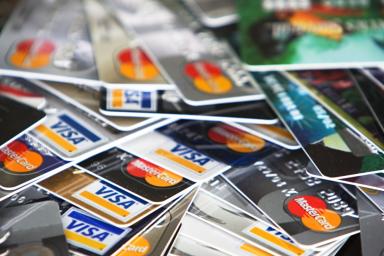The definitive guide to VAT
Learn how to become registered for VAT, which VAT scheme to register for, and how to charge VAT for your goods and services – plus how to pay VAT to HRMC and the deadlines you need to meet.
What is VAT?
Value Added Tax, or VAT as it’s more commonly known, is a tax that’s applied to the sale of goods and services.
Businesses that are registered for VAT collect this indirect tax on behalf of the Government and you will need to register for VAT if your VAT taxable turnover in the last 12 months was over £90,000, (the current VAT threshold) or if you expect your turnover to go over £90,000 in the next 30 days.
You can also choose to register if your turnover is less than £90,000. You may be charged a penalty if you fail to tell HMRC at the correct time you should have been registered for VAT.
The standard rate of VAT, currently 20 per cent, is charged on the majority of goods and services that businesses provide to their customers.
This means that if your business charged £100 for a product or service, the customer would pay £100 plus £20 in VAT – at the standard VAT rate of 20% – resulting in a bill of £120.
Some goods and services, such as books, children’s clothing and dental services are exempt from VAT.
Other goods and services have VAT at a reduced rate of 5 per cent, including power utilities, gas boilers, and solar panels.
HMRC have produced a number of guides to help businesses understand how VAT works, a business's VAT liability, and the different VAT rates on different goods and services.
Not all UK businesses are registered for VAT – it only applies if your VAT taxable turnover in the last 12 months was over £90,000, (the current VAT threshold) or you expect your turnover to exceed £90,000 in the next 30 days.
Once registered, you must start charging VAT on your sales, which is repayable to HMRC, and reclaiming VAT on goods and services from your ‘effective date of registration.
Do I need to register for VAT?
You will need to register for VAT if - your VAT taxable turnover in the last 12 months was over £90,000, (the current VAT threshold) or - you expect your turnover to go over £90,000 in the next 30 days.
You may be charged a penalty if you fail to tell HMRC at the correct time you should have been registered for VAT.
There are a couple of reasons why it’s worth becoming VAT registered before you hit the VAT threshold.
- Being registered for VAT sends a positive message about your business. A VAT registered business is considered to be more mature as it’s deemed to have a turnover of more than £90,000 and therefore appears a solid company to work with.
- Your business can reclaim VAT on the purchases it makes. When you buy products and services for your company you’ll be charged VAT. If you’re registered for VAT you can offset the VAT you’ve been charged (known as ‘Output VAT’) against the VAT you’ve collected (known as ‘Input VAT’).
If your turnover is below the threshold, you can voluntarily register.
You may choose to do this, if the ability to reclaim VAT paid on purchases helps your business.
To register for VAT, you can complete the application process online via the Gov.uk website.
HMRC have created a helpful guide for smaller business owners to check how registering for VAT might impact their business.
How do I become VAT registered?
Most businesses register for VAT online but, alternatively, you can use an agent or accountant to register and submit your VAT returns on behalf of your company.
If you can’t register online, you must contact HMRC – especially if you are applying for a registration exception, are based in the EU and distance selling to the UK, or you are importing goods from another EU country.
- Visit the HMRC tax registration website to begin the process of registering for VAT.
- If you’ve previously registered with HMRC and have a Government Gateway Account, click on ‘I have an account – login’. If you need to create a Government Gateway Account, click ‘Create an account for me’.
- Enter your Government Gateway ID and password, then scroll to the bottom of your business account screen and select ‘Find a tax, duty or scheme’.
- Click ‘VAT and VAT services, e.g. EC Sales List’ from the choice of options, then click Continue. Choose ‘VAT’ from the next screen, then click ‘Continue’ to continue the registration.
Remember that your Business Tax Account (also known as a VAT online account) must be activated to receive any of the messages from HMRC.
For more detail on the registration process, see our guide to Registering for VAT.
What documents do I need to register for VAT?
If you’ve just started your business, or haven’t been trading for a long time, the documents needed for registering for VAT are relatively straightforward.
You’ll need the following to register for VAT:
- A Unique Tax Reference – this is the ten-digit reference number issued to your business when you registered with HMRC for Corporation Tax. It's a good idea to get this as soon as possible.
- Business registration details – company number and registered address. This can be found on your certificate of registration from Companies House.
- Business bank account details – for payments of VAT you reclaim.
- Details of any associated businesses from the past two years.
- If applicable, details of the business if it has been transferred or acquired.
Once submitted, your application for VAT will be processed and then, once registered, you’ll receive a VAT4 – the VAT registration certificate – including the VAT number you’ll need to use on all the invoices and receipts you issue that charge VAT.
How do I file a VAT return to HMRC?
Once you have become VAT registered, your business must file a VAT Return with HMRC every three months.
However, small or medium-size businesses with turnovers of up to £1.35 million can register for the Cash Accounting Scheme.
This lets you calculate VAT on the basis of payments made and received, rather than on basis of invoices issued – this is useful if your business is affected by late customer payments.
You can also submit just one annual return and pay the VAT owed monthly by direct debit.
To complete the return, you’ll need details of your business’s total sales and purchases, how much VAT you’ve charged and how much VAT you’ve paid and wish to reclaim.
The VAT you charge your customers is known as output VAT, while VAT you’ve paid on business purchases is called input VAT.
At predetermined intervals you pay HMRC the excess of your output tax over the VAT you can reclaim as input tax.
But, if the input tax you can reclaim is more than your output tax, you can reclaim the difference from HMRC.
VAT returns are submitted online and your online account is set up when you register for VAT.
HMRC officers may choose to visit your business to check your VAT records.
If your VAT returns are found to be incorrect, you may be charged a penalty and interest on the amount owed.
It's also worth noting that you can self-correct VAT errors via a form available from HMRC.
The deadline for submitting the VAT return and paying HMRC are the same – one month and seven days following the end of the three-month accounting period.
How do I charge VAT?
You will need to issue a VAT invoice for the sale of goods or services to a VAT-registered customer. This should include:
- A unique invoice number
- The business’ name and address
- The business’ VAT registration number
- The invoice date
- The time of supply (also known as tax point) if this is different from the invoice date
- The customer’s name and address
- A description of the goods or services supplied.
For each different type of item listed on the invoice, you must show:
- The unit price or rate, excluding VAT
- The quantity of goods or the extent of the services
- The rate of VAT
- The total amount payable, excluding VAT
- The rate of any cash discount
- The total amount of VAT charged.
What VAT scheme should I register for?
Before you start the registration process, make sure you consider if a VAT scheme is right for your business.
Three to consider for a small business are below and each is suitable to a different type of business.
Standard VAT or Accrual VAT Scheme
Most businesses opt for this scheme as it’s straightforward – you simply pay any VAT you’ve collected (‘Input VAT’) and claim back any VAT you paid (‘Output VAT’) on a quarterly basis.
However, it can cause cash flow problems for small businesses.
For example, if you’ve issued a VAT invoice that has not yet been paid, you’ll still need to pay HMRC the VAT amount you’ve invoiced for in that quarter even if you haven’t received the payment.
Cash accounting
This is often better suited to smaller businesses as it only involves paying HMRC the VAT income you’ve actually received in that quarter.
The downside is you can’t claim VAT back on any unpaid invoices you’re yet to settle.
Find out more about the VAT Cash Accounting Scheme.
Flat Rate Scheme
You can join the Flat Rate Scheme (FRS) at any time from first registering for VAT.
Different eligible business sectors apply a fixed rate, flat percentage to the gross turnover to arrive at the correct VAT due.
There are different fixed rate, flat percentages for eligible businesses sectors and all are lower than 20%.
You can only join this scheme if your turnover is less than £150,000 annually.
In practice you pay HMRC the flat rate (such as 10.5%) even though you can charge 20% VAT to customers – meaning you pay less VAT to HMRC than you collect.
However, the downside is that you can’t claim back the VAT you incur on your purchases apart from some capital expenses in excess of £2,000.
Find out more about the VAT Flat Rate Scheme.
If you have further questions on your VAT responsibilities, HMRC have put together a playlist of helpful videos created by their experts.
Want to learn how to manage your start-up’s finances? Check out our free online courses in partnership with the Open University on being an entrepreneur.
Our free Learn with Start Up Loans courses include:
- Introduction to bookkeeping and accounting
- Companies and financial accounting
- Financial methods in environmental decisions
Plus free courses on finance and accounting, project management, and leadership.
Tags relating to this content
Disclaimer: The Start -Up Loans Company makes reasonable efforts to keep the content of this article up to date, but we do not guarantee or warrant (implied or otherwise) that it is current, accurate or complete. This article is intended for general information purposes only and does not constitute advice of any kind, including legal, financial, tax or other professional advice. You should always seek professional or specialist advice or support before doing anything on the basis of the content of this article.
The Start-Up Loans Company is not liable for any loss or damage (foreseeable or not) that may come from relying on this article, whether as a result of our negligence, breach of contract or otherwise. “Loss” includes (but is not limited to) any direct, indirect or consequential loss, loss of income, revenue, benefits, profits, opportunity, anticipated savings, or data. We do not exclude liability for any liability which cannot be excluded or limited under English law. Reference to any person, organisation, business, or event does not constitute an endorsement or recommendation from The Start-Up Loans Company, its parent company British Business Bank plc, or the UK Government.
Your previously read articles
Sign up for our newsletter
Just add your details to receive updates and news from Start Up Loans
Sign up to our newsletter


